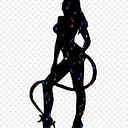You’re in the shower, and you feel a lump in your breast. You’re cooking dinner, and you suddenly feel a shooting pain in your breast. You’re getting dressed, and you notice nipple discharge. You might notice these changes at any moment. They can be scary — and they often leave you unsure of what to do next.
Whether you notice the change or it’s detected by your physician at a routine exam, such as a mammogram, MRI, or ultrasound, don’t ignore it. Sometimes these changes are perfectly normal, and you can simply monitor the change on your own. Other times, it could be an indicator of something more.
Types of boobs
Everyone has their own unique breast shape and size. Some people have made up classifications of breast shapes, but all of them are based on visual appearance. There is no official or medical classification for breast shape.
Breast shape and size is determined genetically, but they can change as a result of pregnancy and lactation, intensive workouts, and sudden weight fluctuations. There may also be noticeable changes at certain points during the menstrual cycle.
The breasts can become bigger temporarily during pregnancy or when breastfeeding. Sometimes, breast shape can be related to weight gain or sexual arousal.
Certain medications can cause breast swelling, too. Some people observe this when taking birth control pills.
Each breast has 15 to 20 sections, or lobes, that surround the nipple like spokes on a wheel. Inside these lobes are smaller lobes, called lobules. At the end of each lobule are tiny “bulbs” that make milk. These are linked together by small tubes called ducts, which carry milk to the nipples.
The nipple is in the center of a darker area of skin called the areola. The areola contains small glands called Montgomery glands, which lubricate the nipple during breastfeeding. Fat fills the spaces between the lobes and ducts.
There are no muscles in the breasts, but the pectoral or chest muscles lie under each breast and cover the ribs.
Each breast also contains blood vessels, as well as vessels that carry a fluid called lymph. Lymph travels throughout the body through a network called the lymphatic system. The lymphatic system carries cells that help the body fight infections. The lymph vessels lead to the lymph nodes (small bean-shaped glands).
Breast development and function depend on the hormones estrogen and progesterone, which are made in the ovaries. Estrogen elongates the ducts and makes them create side branches. Progesterone increases the number and size of the lobules in order to prepare the breast for feeding a baby.
After ovulation, progesterone makes the breast cells grow and blood vessels enlarge and fill with blood. At this time, the breasts often become engorged with fluid and may be tender and swollen.
Here are some examples of basic varieties of breast shapes:
- Round — The breasts are equally full at the top and bottom.
- East west — The right and left breasts go from the center of the chest to the sides. The nipples often point in opposite directions.
- Side set (widely set) — The shape is similar to east west, with a wider space between the breasts.
- Teardrop — The breasts are round. The bottoms are slightly wider than the tops, characterized by very smooth lines.
- Narrow — The breasts are thin, and the nipples point down. The bottoms are fuller than the tops. The breasts are longer than they are wide.
- Asymmetrical — One breast is noticeably bigger than the other.
- Bell shape — The breasts are large, full at the bottom, and slimmer at the top.
